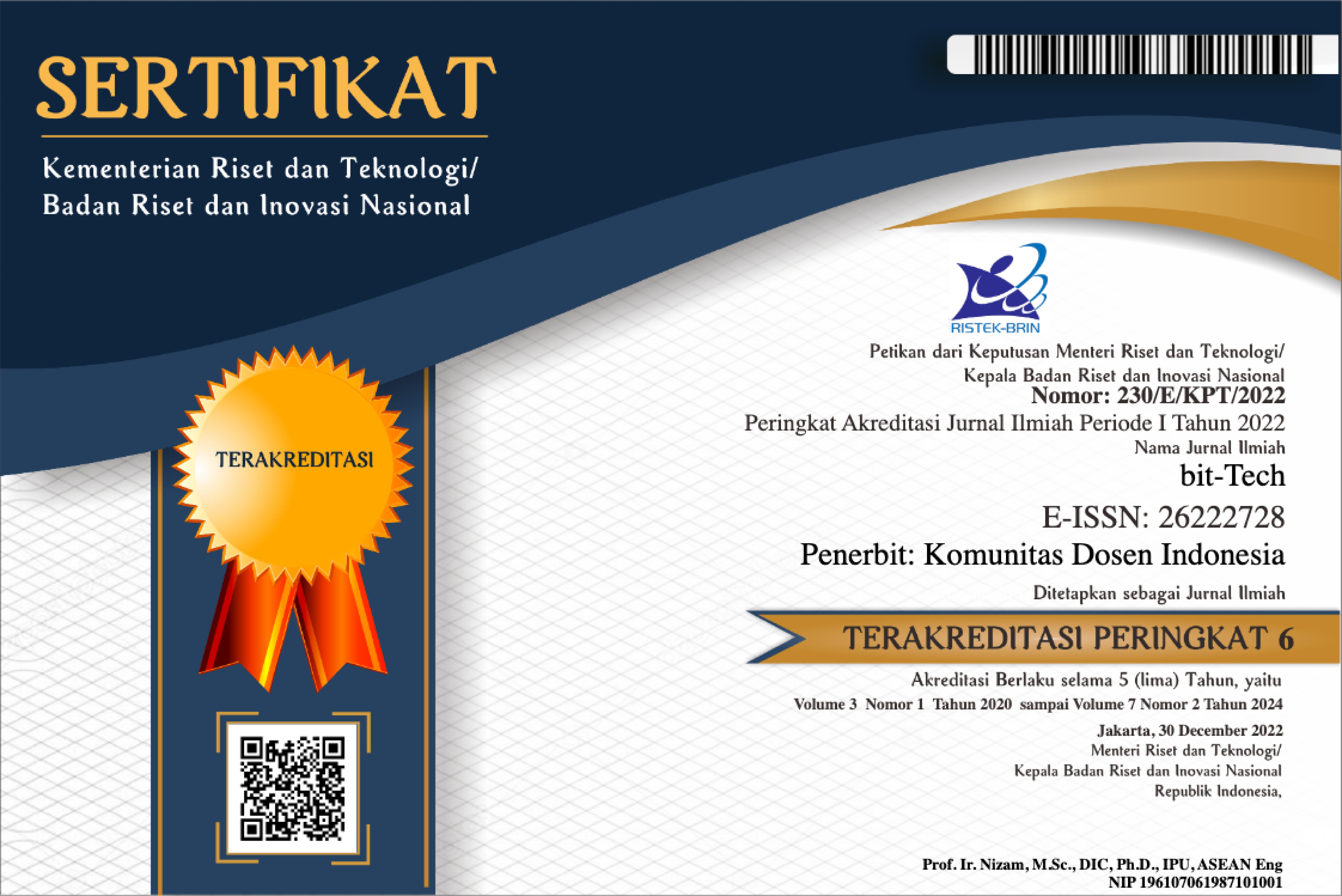Decision Support System for Final Assignment with Analytical Hierarchy Process (AHP) Method. Case Study: Informatics Engineering Faculty of Engineering, Pancasila University
DOI:
https://doi.org/10.32877/bt.v1i1.7
Keywords:
DSS, Residental Selection, AHP
Abstract
In human life always faced with several choices. The right decision making will affect our lives in the future. In the bachelor degree program education Final Project is the closing course to get a Bachelor's degree. Many things need to be considered in determining the appropriate TA topic. Many people have a view, choose the topic of Final Assignment that is easy so easy, regardless of suitability with interests and talents. Actually this view needs to be reviewed because choosing the topic of Final Assignment has a significant impact on the lives of these students in the future. To determine the topic of Final Assignment in the Informatics Engineering Faculty of Engineering, the Pancasila University required mastering criteria, mastering memorization, mastering the count, mastering the design, value, and areas of interest. And has an alternative, namely Information Systems, Decision Support Systems using methods, Intelligent Systems/Expert Systems, Networks, Mobile Programming (Games), Mobile Programming (Applications), Use of Algorithms in Support Systems / Applications of this Decree using Analytic Hierarchy Process method for determine the exact topic of Final Assignment according to the ability of students. The AHP method refers to taking selected elective courses
Downloads
Downloads
Published
How to Cite
Issue
Section
License
I hereby assign and transfer to bit-Tech all exclusive copyright ownership rights to the above work. This includes, but is not limited to, the right to publish, republish, downgrade, distribute, transmit, sell, or use the work and other related materials worldwide, in whole, or in part, in all languages, in electronic, printed, or any other form of media, now known or hereafter developed and reserves the right to permit or license a third party to do any of the above. I understand that this exclusive right will belong to bit-Tech from the date the article is accepted for publication. I also understand that bit-Tech, as the copyright owner, has sole authority to license and permit reproduction of the article. I understand that, except for copyright, any other proprietary rights associated with the work (e.g. patents or other rights to any process or procedure) must be retained by the author. In addition, I understand that bit-Tech permits authors to use their papers in any way permitted by the applied Creative Commons license.


 DOI :
DOI :
 Abstract views: 413
/
Abstract views: 413
/  PDF downloads: 278
PDF downloads: 278





